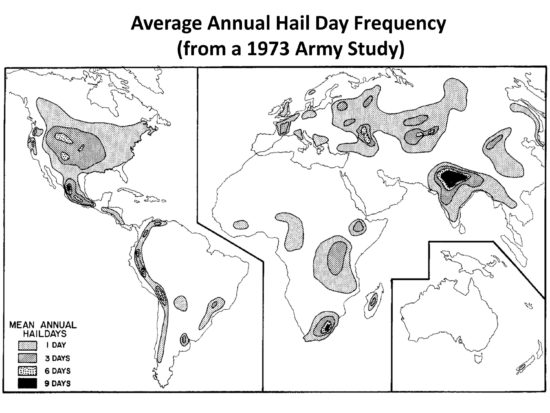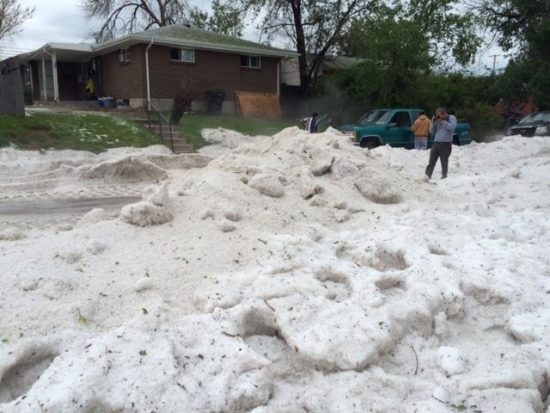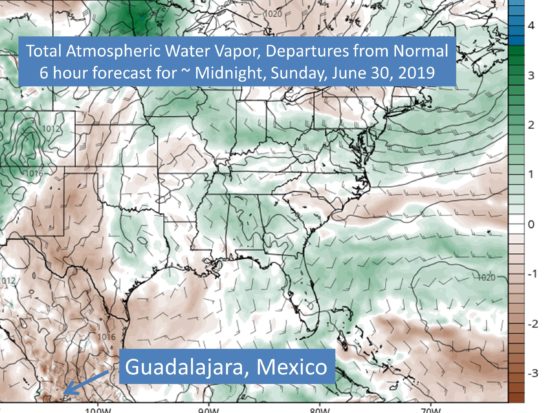Recent news events regarding heat waves, record high temperatures, and even yesterday’s hailstorm in Guadalajara, Mexico, are commonly presented as evidence of a changing climate system. The trouble is that making such an association is a stretch, at best, for a number of reasons.
Today I’ll deal with the Guadalajara “freak” hailstorm, which is claimed to have “dumped up to 6 feet of ice” on portions of the city.
The Mountains of Northwest Mexico are “Hail Central”
The high elevations of northwestern Mexico are notorious for hailstorms during the “Mexican monsoon” season, when warm moist air flows in from the Pacific and is forced to rise over the mountains. This old hand-drawn map of global hail frequency shows the area clearly, and Guadalajara is in the middle of it.

While most of that part of northwest Mexico is only sparsely populated, rarely a significant hailstorm will happen to hit a city as large as Guadalajara, simply because eventually every place gets hit. This is the same issue as Hurricane Sandy hitting New York City… it was not an exceptional hurricane (Cat 1 at landfall), but it is rare for one to make a direct hit of a major metropolitan area (and at high tide, from the worst possible angle, etc.).
The historical hail problem at the higher elevations of western Mexico is so bad that a Volkswagen assembly plant there once resorted to using unproven ‘hail cannons’ to try to protect its inventory. Ironically, the local farmers then blamed the hail cannon for working too well, and supposedly causing drought conditions. Hail cannons were more popular in the early 20th Century, as evidenced by the 3rd International Congress on Hail Shooting being held in Lyon, France, way back in 1901.
No, “Feet” of Hail Didn’t Fall
I’m sorry, but “6 feet of ice” was not dumped on the city. When a major hailstorm like this hits, especially with a lot of small hail and heavy rain, the flooding deposits the hail into current-driven drifts. Rivers of floodwaters containing the hail caused localized piles of hail to accumulate.
For example, look at this hailstorm aftermath in Denver, CO. See all of the ice in the street, but not in the yard?:

I did not see any hail dents in the video and photos accompanying the news reports; the storm had an abundance of small hail in it.
A Moister Atmosphere from Global Warming Wasn’t to Blame
So, was the intense storm from more moisture in the atmosphere due to global warming?
No, there was actually less water vapor than normal. Here’s the GFS weather forecast model total precipitable water (basically, how much water is available in the lower atmosphere to feed precipitation systems) forecast only 6 hours into that model run, which was about the time of the hail storm. The water vapor available to the storm was actually below average.

GFS 6 hour forecast of total precipitable water at the time of the Guadalajara hailstorm of June 30, 2019 (forecast graphic from TropicalTidbits.com).
I’ve seen a few news reports with quotes about this hailstorm being exceptional and so caused by climate change. There is no evidence that this is the case.

 Home/Blog
Home/Blog



